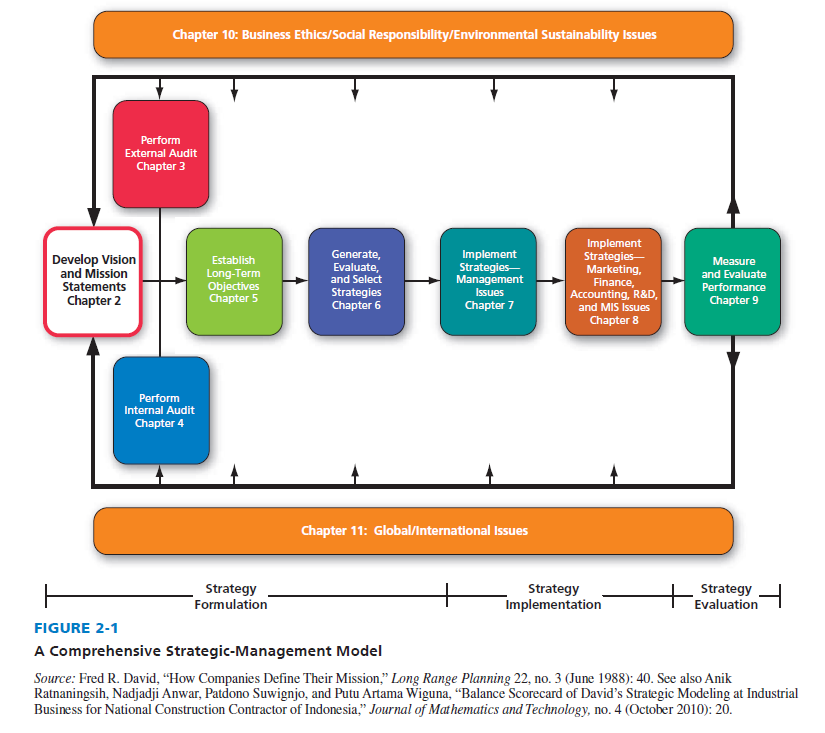Current thought on mission statements is based largely on guidelines set forth in the mid-1970s by Peter Drucker, who is often called “the father of modern management” for his pioneering studies at General motors and for his 22 books and hundreds of articles. Drucker believes that asking the question “What is our business?” is synonymous with asking “What is our mission?” An enduring statement of purpose that distinguishes one organization from other similar enterprises, the mission statement is a declaration of an organization’s “reason for being.” it answers the pivotal question “What is our business?” A clear mission statement is essential for effectively establishing objectives and formulating strategies.
Sometimes called a creed statement, a statement of purpose, a statement of philosophy, a statement of beliefs, a statement of business principles, or a statement “defining our business,” a mission statement reveals what an organization wants to be and whom it wants to serve. All organizations have a reason for being, even if strategists have not consciously transformed this reason into writing. As illustrated with white shading in Figure 2-1, carefully prepared statements of vision and mission are widely recognized by both practitioners and academicians as the first step in strategic management. Drucker has the following to say about mission statements (paraphrased):

A mission statement is the foundation for priorities, strategies, plans, and work assignments. It is the starting point for the design of jobs and organizational structures. Nothing may seem simpler or more obvious than to know what a company’s business is. a lumber mill makes lumber, an airline carries passengers and freight, and a bank lends money. But “What is our business?” is almost always a difficult question and the right answer is usually anything but obvious. The answer to this question is the first responsibility of strategists.1
Some strategists spend almost every moment of every day on administrative and tactical concerns; those who rush quickly to establish objectives and implement strategies often overlook the development of a vision and mission statement. This problem is widespread even among large organizations. Many corporations in the United States have not yet developed a formal vision or mission statement. An increasing number of organizations, however, are developing these statements.
Some companies develop mission statements simply because owners or top management believe it is fashionable, rather than out of any real commitment. However, as described in this chapter, firms that develop and systematically revisit their vision and mission statements, treat them as living documents, and consider them to be an integral part of the firm’s culture realize great benefits. For example, managers at Johnson & Johnson (J&J) meet regularly with employees to review, reword, and reaffirm the firm’s vision and mission. The entire J&J workforce recognizes the value that top management places on this exercise, and these employees respond accordingly.
Source: David Fred, David Forest (2016), Strategic Management: A Competitive Advantage Approach, Concepts and Cases, Pearson (16th Edition).

Thank you for any other informative web site. The place else may just I am getting that kind of information written in such a perfect manner? I have a venture that I am just now operating on, and I’ve been at the glance out for such information.
Sweet website , super design, very clean and employ pleasant.